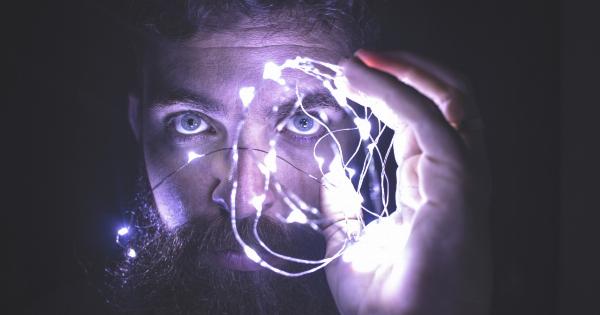Have you ever looked at a picture or a pattern and immediately felt a sense of discomfort or repulsion? Our eyes have the ability to reject certain images, making us feel uneasy or even physically ill. But what causes this phenomenon?.
Visual Perception and the Brain
Visual perception is the process by which our brains interpret visual stimuli from our eyes. It involves a complex network of neurons and pathways that work together to create our perception of the world around us.
Our brains use visual cues such as color, shape, texture, and orientation to make sense of the images our eyes see.
However, our visual perception is not always accurate. Our brains can often be tricked or misled by certain visual stimuli, leading to distorted or inappropriate perceptions.
This is particularly true when it comes to images that our brains perceive as dangerous or threatening.
The Role of Evolutionary Biology
One of the main reasons our eyes reject certain images is due to our evolutionary biology.
Our ancestors were constantly on the lookout for potential predators or other threats, and as a result, our brains have evolved to recognize certain visual cues as dangerous.
For example, our brains are hardwired to recognize snakes and other reptiles as potential threats, even if we have never encountered one before.
This is because our ancestors who were better at detecting and avoiding snakes were more likely to survive and pass on their genes, ultimately leading to the evolution of a snake-detecting brain.
Similarly, our brains are primed to recognize patterns that resemble human faces, particularly when they are distorted or incomplete.
This is known as the “uncanny valley” effect, and it occurs when an image is almost but not quite human-like, creating a sense of discomfort and revulsion. This mechanism may have evolved as a way to detect potential predators or other humans who may pose a threat.
The Influence of Culture and Experience
In addition to our evolutionary biology, our cultural and personal experiences can also play a role in determining which images we find appealing or repulsive.
For example, people from different cultures may have different aesthetic preferences due to their exposure to different types of art and visual media.
Similarly, personal experiences such as trauma or phobias can lead to a heightened sensitivity to certain images or patterns.
For example, someone who has experienced a traumatic event involving spiders may be more likely to reject images of spiders or spider-like patterns, even if they are not consciously aware of the connection.
The Intersection of Art and Science
The phenomenon of certain images being rejected by our eyes has long been of interest to artists and scientists alike.
In the field of art, many artists have experimented with creating images that intentionally elicit feelings of discomfort or unease in the viewer.
For example, the surrealist movement of the 20th century was known for its use of distorted, dreamlike images that challenged traditional notions of reality and perception.
Similarly, contemporary artists like Banksy and Shepard Fairey have used provocative imagery to provoke social and political commentary.
Meanwhile, in the field of science, researchers have been studying the neural processes involved in visual perception and how they contribute to the rejection of certain images.
This research has important implications for fields such as psychology, neuroscience, and even artificial intelligence.
Conclusion
The rejection of certain images by our eyes is a complex phenomenon that involves a variety of factors, including evolutionary biology, culture and personal experience, and the intersection of art and science.
However, by understanding the underlying mechanisms at work, we can gain a better understanding of our own perceptions and reactions to visual stimuli.































